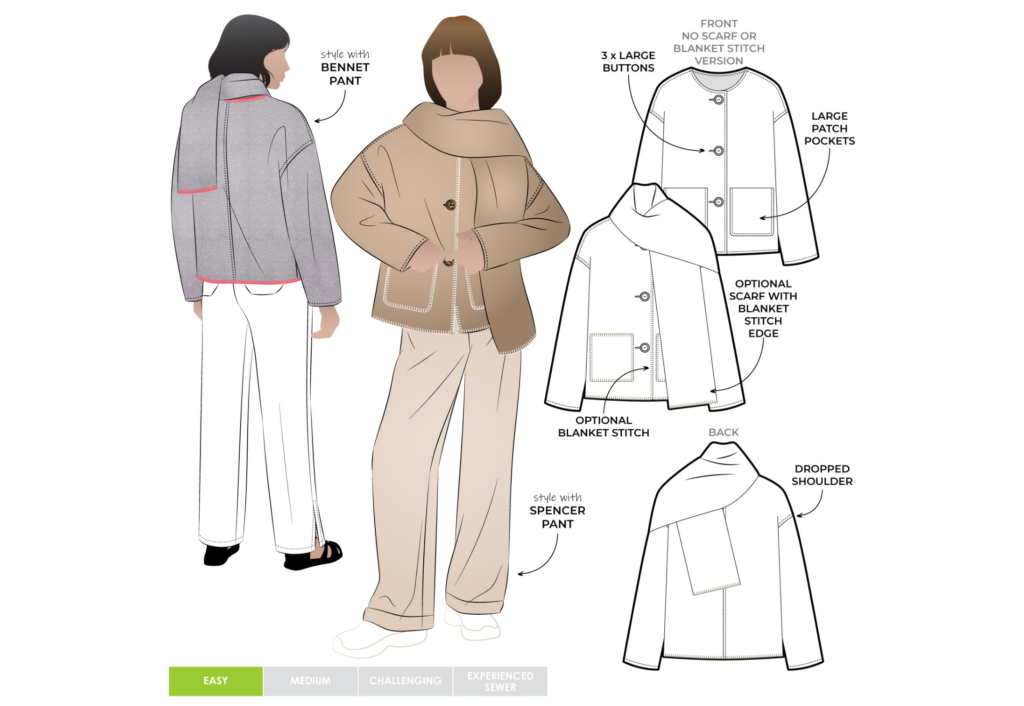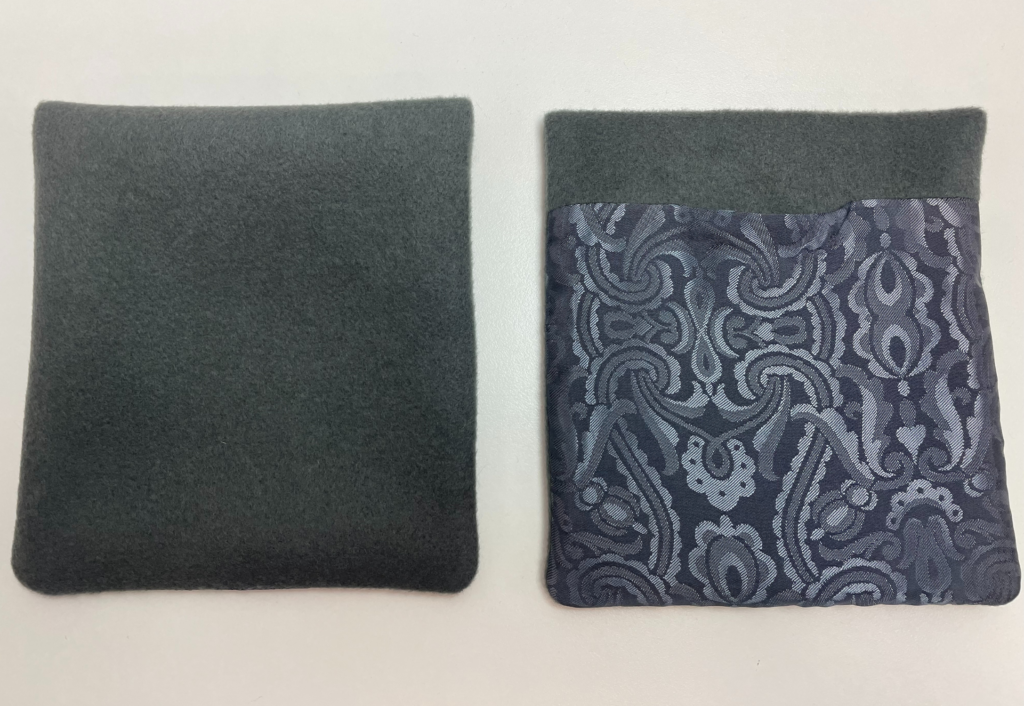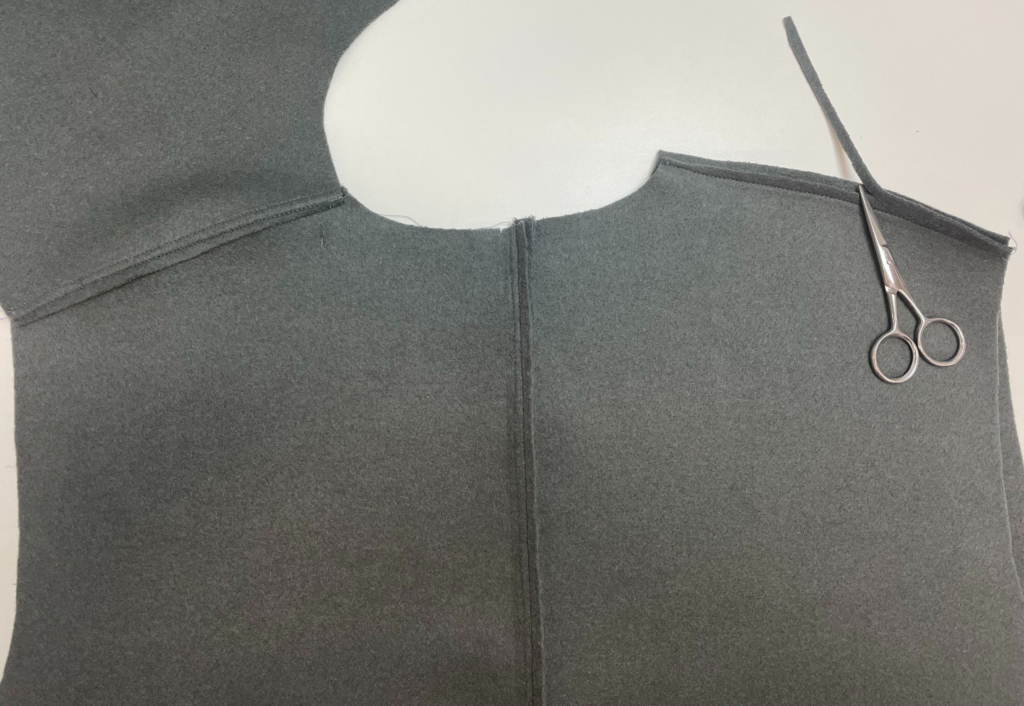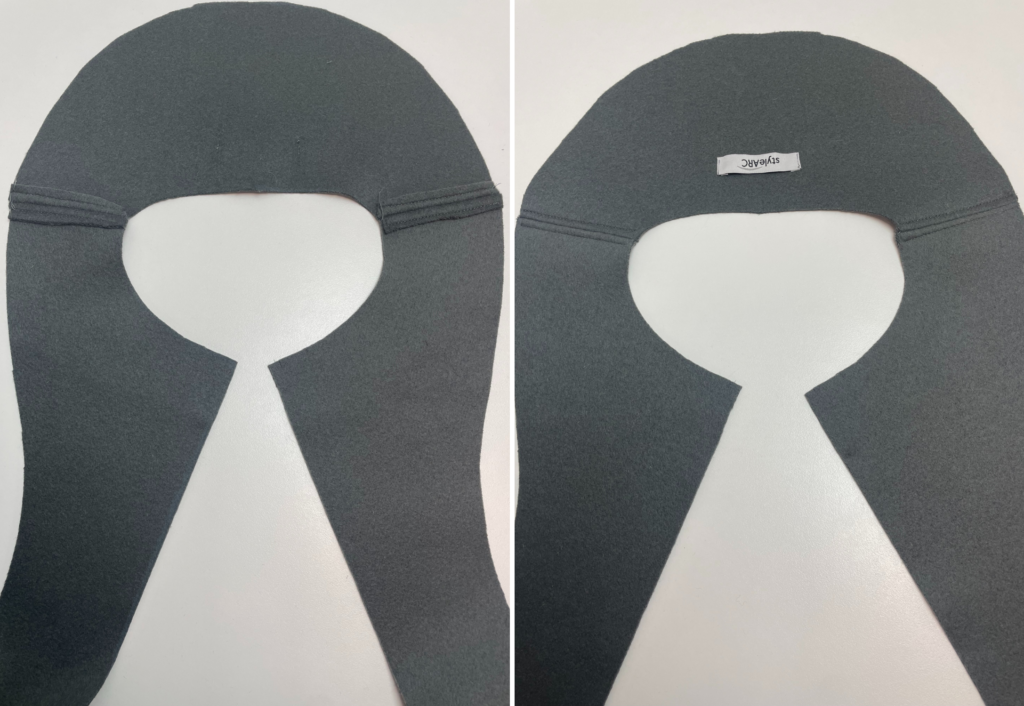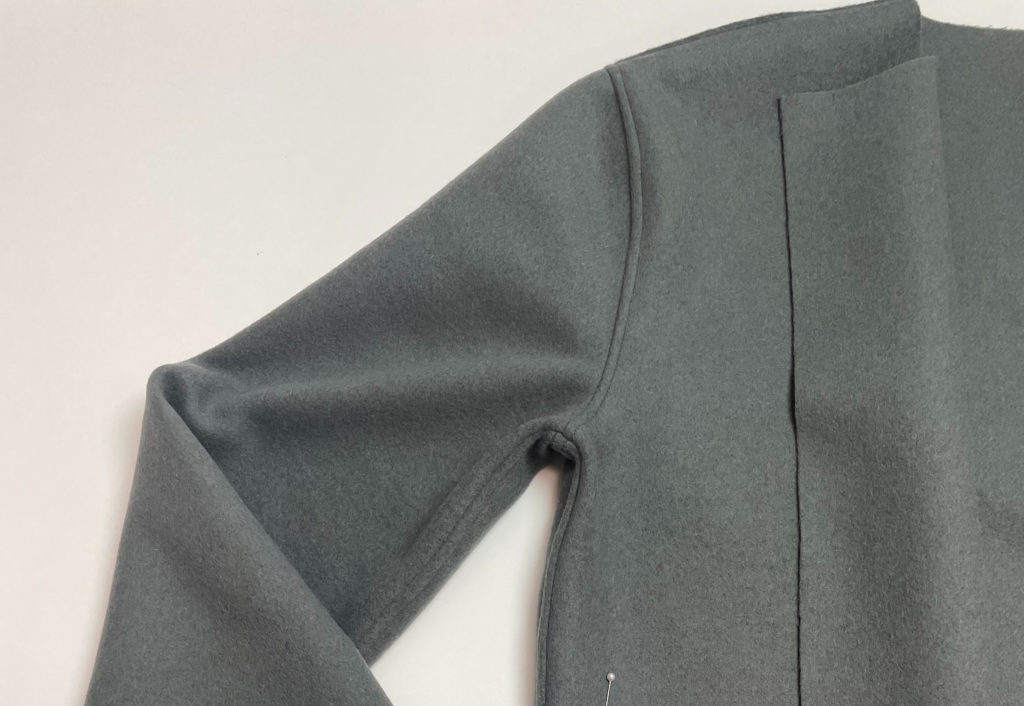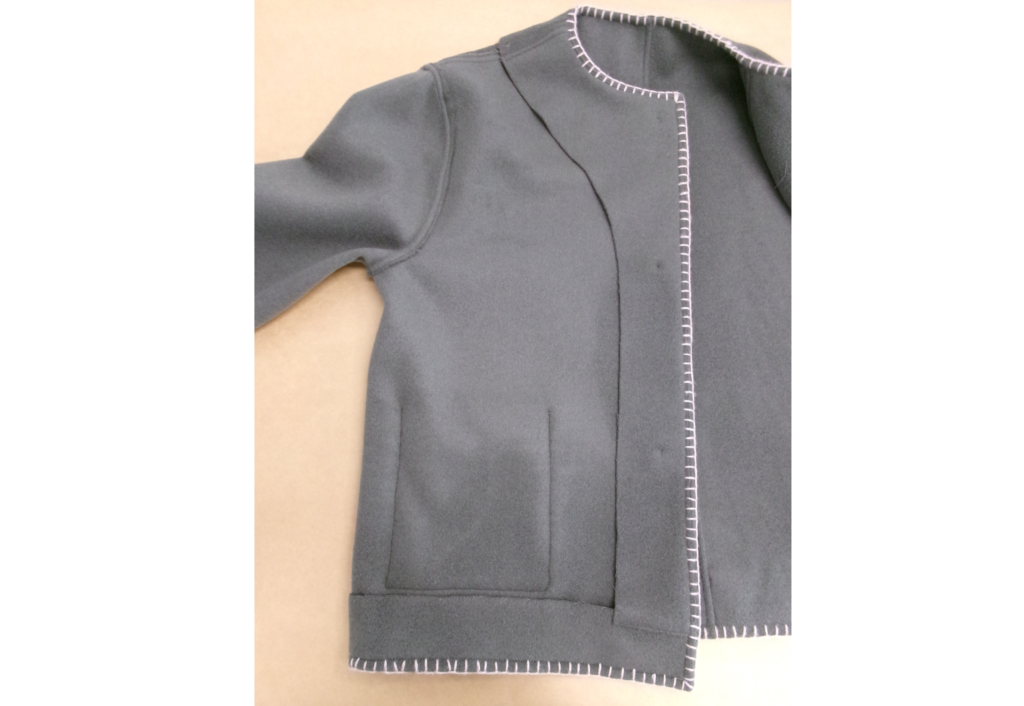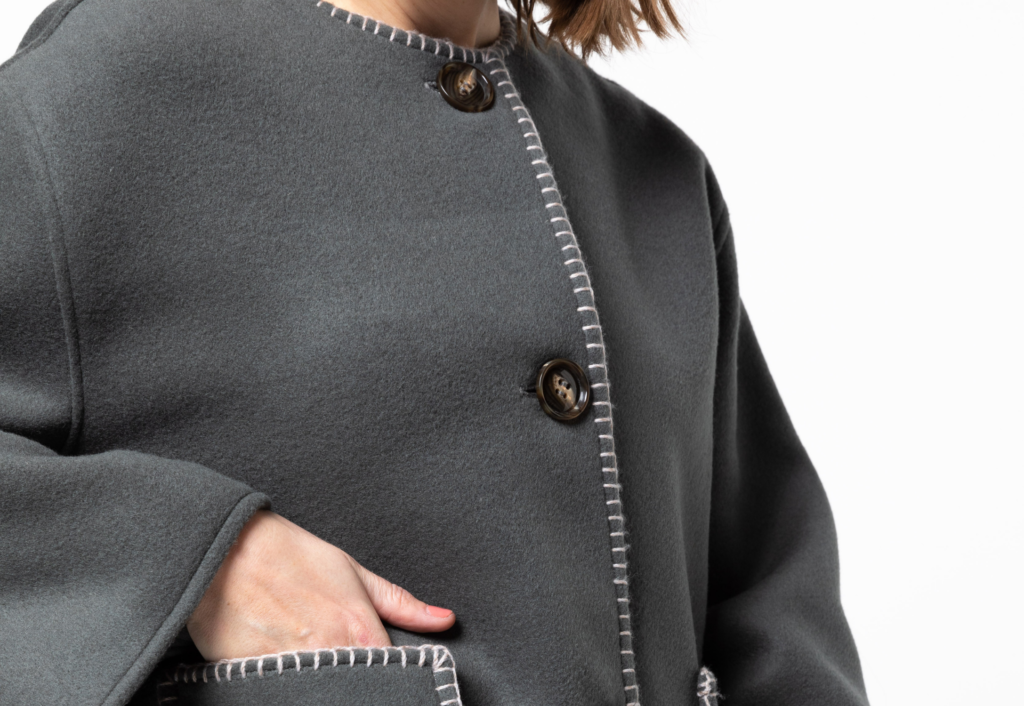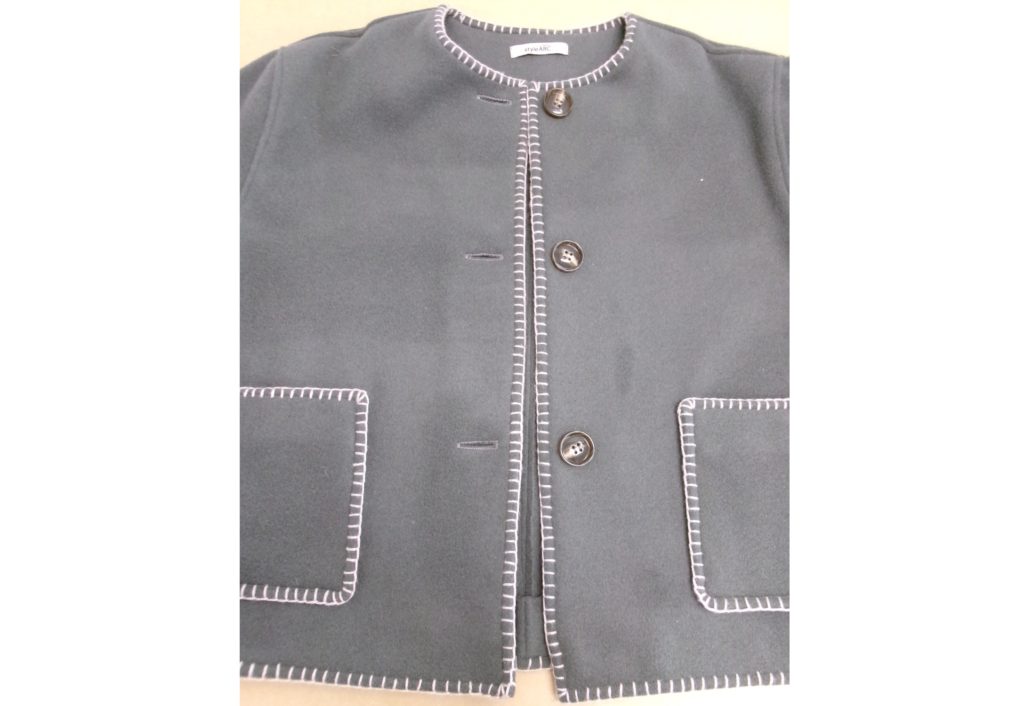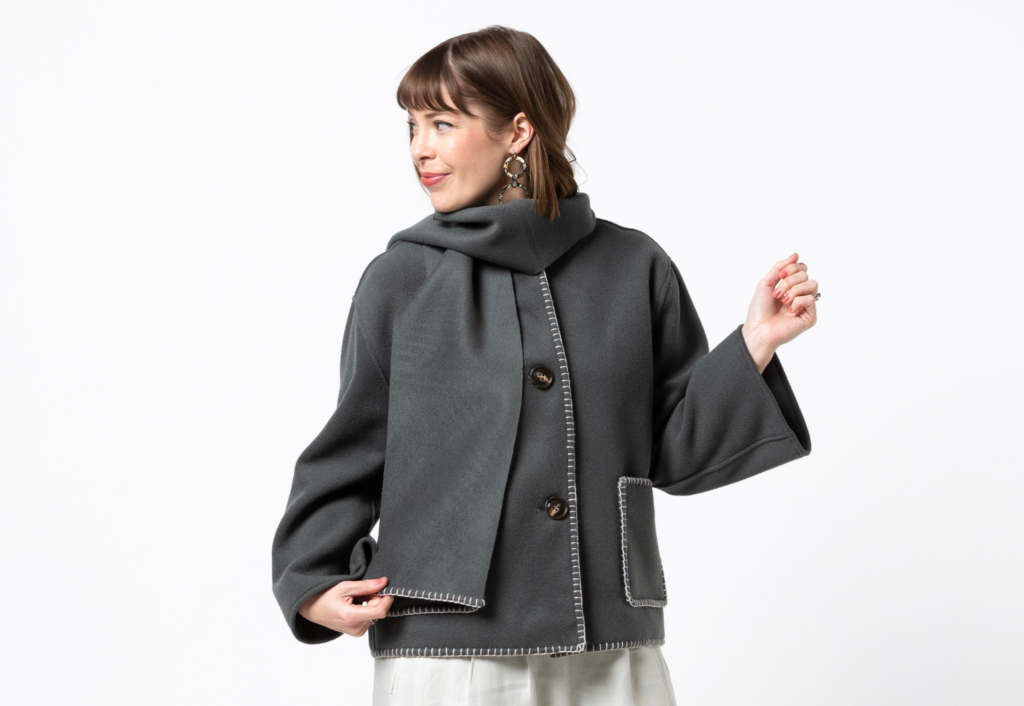JACKET CONSTRUCTION:
With right sides facing sew the top edges of the pocket and the pocket lining together, leaving a small opening (this will allow you to turn out the pocket to the right side). Refer to the notches on the pattern for the opening.
With right sides together sew all the way around the pocket, clip the corners and into the rounded seams and turn out to the right side and press. Use a hand stitch to sew up the turn out opening, Sew a 6mm (¼”) topstitching to the top edge of the pocket.
Pin the pocket to the front body of the jacket using the markings on the pattern, once in place sew around the 3 outer edges of the pocket with a 6mm (¼”) topstitch.
With right sides together sew the centre back seams of the body together. Neaten the seam with an overlocker/serger and press towards the wearers left. Sew a 6mm (¼”) topstitch along the seam.
With right sides facing sew the front and back shoulder seams together. Neaten the seam with an overlocker/serger and press towards the back. Sew a 6mm (¼”) topstitch along the shoulder seam.
You can also trim back the seam allowances of 1 side of each seam in order to reduce bulk.
With right sides together sew the shoulders of the front facings (3) to the shoulders of the back neck facing (4) and press the seams open and sew a 6mm (¼”) top stitch to each side of the seam to hold flat.
Neaten the outside edge of the facing with an overlocker/serger. Set the facing aside until Step 16.
Sew a large stitch to the head of the sleeve and slightly ease, this makes it easier to sew the sleeve into the armhole.
With right sides facing, match the notches, pin together and sew the sleeve head into the armhole.
Neaten the armhole seams with a serger/overlocker. Press the armhole seams toward the body and sew a 6mm (¼”) topstitch along the seam.
With right sides facing sew the side seams and underarm sleeve seams together, start at the sleeve opening and sew all the way through to the hem of the body, ensuring to match the underarm seam.
Neaten seam with an overlocker/serger. Press toward the back and sew a 6mm (¼”) topstitch along the side seam and under arm seam.
Neaten the hem of the sleeves with an overlocker/serger. Turn up the hemline of the sleeves at the notches, pin in place.
Sew a 6mm (¼”) topstitch around the base of the sleeve hem and press. Finish the hem by hand stitching the sleeve hem to the sleeve.
Neaten the hemline of the body with an overlocker/serger.
With right sides together sew the bottom edge of the front facing (3) to the front hem of jacket front (2) and press the seam up towards the facing. Understitch the seam on the side of the facing.
With right sides facing, fold the jacket hem up at the notch and pin the facing to the hem of the jacket body.
Stitch the facing to the jacket, start sewing from the front hem and sew all the way along the centre front, pivoting at the neckline, around the neckline and back down along the centre front to the hem.
Clip into the neck seams and the corners, turn out to the right side, press the seam and understitch on the side of the facing.
From the right side sew a 6mm (¼”) topstitch all the way around the outer edges of the jacket.
Buttonhole the right front as marked on the pattern.
Sew buttons to correspond with buttonholes on the left front.
Optional: Sew a blanket stitch around all edges.
Hand stitch the hem.
Press your new jacket.
SCARF:
Match the notches and stitch the two short ends together. If you’re using a felted fabric such as melton or boiled wool, press the seam open and sew an edge stitch along both sides of the seam. Neatly trim away the excess seam allowance. For woven fabrics that fray we suggest using a French seam or alternative seaming method appropriate for your fabric.
Finish the cut edges with a method that is appropriate for your fabric, such as a blanket stitch (for felted types of fabric), narrow double turn (for woven fabrics that fray) or your preferred method.

